The Bear Mountain Bridge
June 2003
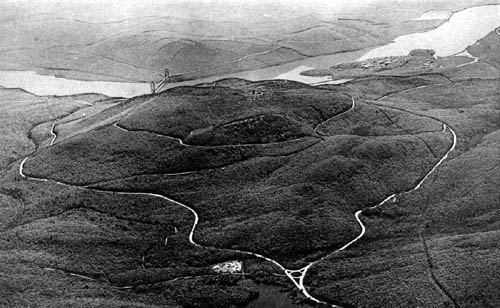
View from the WSW of Bear Mountain, the Bear Mountain Bridge, and Anthony's Nose at a major NW to NE bend in the Hudson River. (From Lowe, 1950, Figure 1.)
The Dukelabs staff has recently (2003) investigated the structural geology of the west and east footings of the Bear Mountain Bridge in connection with a new geotechnical engineering project aimed at replacing the aging cables. Built ahead of schedule in 1923-24, the bridge was a boon to transportation and commerce and at the time providing the easiest way for New Yorkers to cross the Hudson and partake of recreational areas. Engineers for the new project will evaluate potential strategies for replacement or strengthening of the aging suspension cable network. In addition to the images here, annotated scanned images from a brochure published by the NYS Bridge Authority entitled Bear Mountain Bridge - The History and a Quicktime Virtual Reality tour of the western bridge area will be found by those who click.
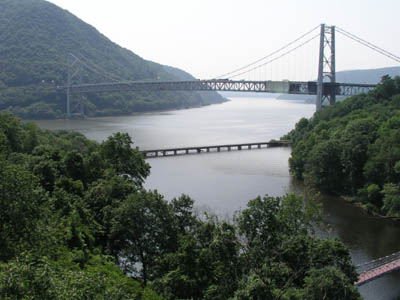
Bear Mountain Bridge - southeastward view from Popolopen Creek Bridge (Dukelabs Image - May, 2003).
The two main suspension cables consist of 7,542 individual galvanized wires 0.192" in diameter and wrapped to a finished cable diameter of 18.25". The total length of wire used in both cables amounted to 7,377 miles, almost enough to surround the conterminous United States. The wire-wrapped suspension cables enter the anchorages where they are concreted into Grenville-aged (~1.0-1.3 billion year old) bedrock on both sides of the bridge. The main suspension cables are disseminated into 37 strands, each consisting of 196 galvanized wires. The strands are attached to eyebar chains that are fixed to eyebars attached to the the bedrock anchorages.
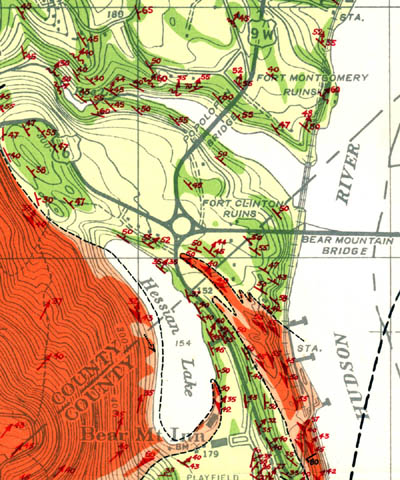
Geologic map of the west anchorage of the Bear Mountain bridge showing high grade (granulite facies) Grenville Series metasediments (in green) and the Storm King granitoid gneiss (in orange). (From Lowe, 1950, Plate 5.)
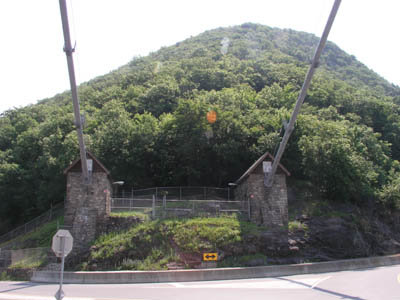
View of Anthony's Nose, east anchorage buildings and main suspension cables. (Dukelabs Image - May, 2003).
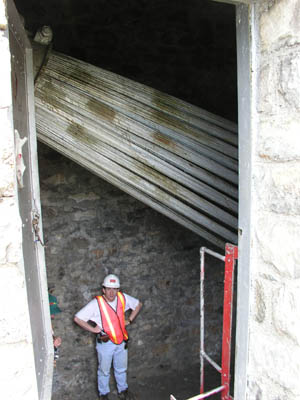
View of the NE anchorage building and cable strand separation. (Dukelabs Image - May, 2003).
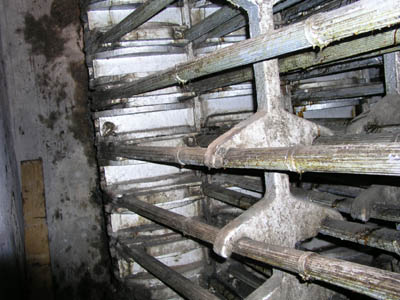
View of cable strands and eyebar chains, east anchorage. (Dukelabs Image - May, 2003).
General E-mail: info@dukelabs.com
 Back Home
Back Home
Note: The material on this page and subpages are protected by copyright statutes and can not be used for any commercial purpose unless you cut us in! Educators are free to use any and all of these materials for instructional purposes with proper acknowledgement [© 2023] .
